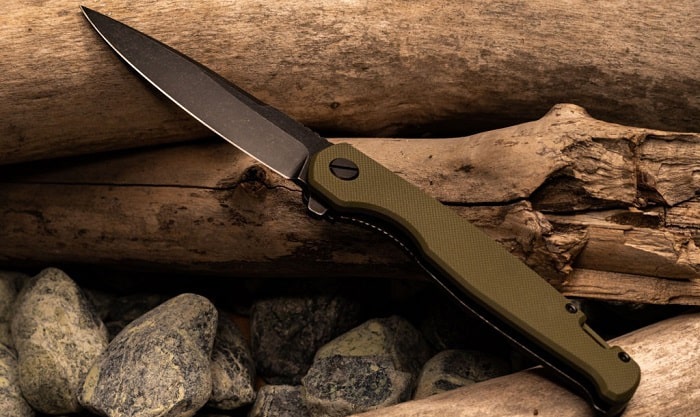For kitchen professionals, mastering the art of cutting, slicing, and dicing is essential. But what truly elevates a chef's skills is the choice of tools, specifically the knives. A critical aspect of selecting the right knife is understanding the knife steel hardness chart. This chart helps chefs determine the durability, performance, and versatility of the blade they are using.
The knife steel hardness chart is a guide that outlines the hardness of different knife steels measured on the Rockwell Hardness Scale. This scale provides a quantitative value of a material's resistance to indentation, which directly affects the knife's edge retention and toughness. Understanding this chart is crucial for anyone in the culinary world who wants to ensure they are using the best tool for their craft.

The Importance of Steel Hardness in Kitchen Knives
For chefs, the importance of using a knife with the right hardness cannot be overstated. A knife with the right hardness will maintain its edge longer, reducing the frequency of sharpening and ensuring consistent performance in the kitchen. This is particularly important for tasks that require precision, such as slicing delicate ingredients or carving intricate designs.
Moreover, the hardness of the knife steel also influences its resistance to wear and corrosion. For instance, a blade with higher hardness will generally provide better edge retention. However, it may also be more brittle, making it susceptible to chipping if not handled correctly. Therefore, understanding the balance between hardness and toughness is key for kitchen professionals looking to optimize their knife selection.
How to Read a Knife Steel Hardness Chart
The knife steel hardness chart is presented with the Rockwell scale ratings, typically ranging from HRC 52-66 for kitchen knives. Here's a breakdown of what these numbers mean:
- HRC 52-54: These knives are softer and more flexible. They are less prone to chipping but require frequent sharpening.
- HRC 55-57: A balanced choice, offering moderate edge retention and toughness.
- HRC 58-60: Common in high-quality kitchen knives, providing excellent edge retention while maintaining reasonable toughness.
- HRC 61-66: These blades are extremely hard, offering superior edge retention but may be more brittle and prone to chipping.
For a more in-depth understanding, chefs can explore resources like the Bohler M390 in Folding Knives which discusses steel types frequently used in premium knives.
Factors Influencing Steel Hardness
Several factors influence the hardness of knife steel, including its composition, heat treatment, and the method of manufacturing. The composition of the steel, which includes elements such as carbon, chromium, and vanadium, plays a significant role in determining its hardness and other properties.
Heat treatment is another critical factor. This process involves heating and cooling the steel to alter its physical and mechanical properties. Proper heat treatment can enhance the steel's hardness and toughness, making it ideal for kitchen applications.
Manufacturers often employ different methods to achieve the desired hardness levels. For more on how steel types affect knife performance, check out Fixed Blade Knife for Skinning Game.
Choosing the Right Knife for Your Needs
When selecting a knife, kitchen professionals must consider the tasks they perform most frequently. For instance, a chef who specializes in delicate cuts may prefer a harder steel for its superior edge retention. In contrast, those who require a versatile knife for a variety of tasks might opt for a softer steel that offers greater flexibility and toughness.
Understanding the knife steel hardness chart allows chefs to make informed decisions about their tools, ensuring they have the right knife for every culinary challenge. For a comprehensive guide on blade edge types, visit Blade Edge Types Explained.

FAQs
What is the best hardness for kitchen knives?
There is no one-size-fits-all answer as the best hardness depends on the specific cutting tasks. Generally, HRC 58-60 offers a good balance for most kitchen tasks.
Does higher hardness mean a better knife?
Not necessarily. While higher hardness offers better edge retention, it can also make the knife more brittle. It's important to balance hardness with toughness based on usage needs.
How often should I sharpen my kitchen knife?
This depends on the steel's hardness and the frequency of use. Softer steels may require more frequent sharpening, while harder steels can retain their edge longer.
This article contains affiliate links. We may earn a commission at no extra cost to you.


























